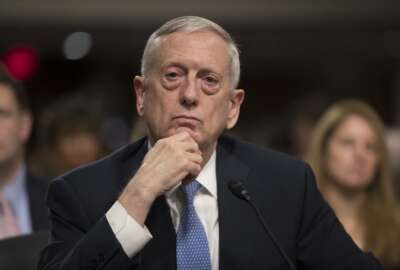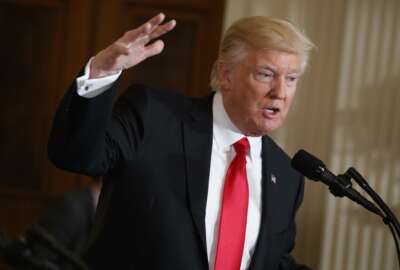
Military readiness problems can’t be fixed overnight, Defense chiefs warn
The second highest-ranking officers from each of the military services told Congress on Tuesday that they'd welcome a short-term cash infusion along the lines that...
The second highest-ranking officers from each of the military services told Congress on Tuesday that they’d welcome a short-term cash infusion along the lines that the President and Defense secretary have directed the military services to propose as add-ons to the 2017 budget in order to bring the armed forces to a higher level of readiness.
But they emphasized that the problems they currently face are the result of several consecutive years of budget chaos, including a sudden sequestration in 2013, persistent underfunding of key functions like base maintenance and pilot training and shoddy treatment of the mostly civilian workforce that’s tasked with keeping ships, tanks and airplanes in good repair.
In short, the military’s readiness problems are serious, were developed over the course of many years and can’t be fixed overnight, they said.
“The most important action you can take to have both a positive and lasting impact would be to immediately repeal the Budget Control Act,” said Gen. Daniel Allyn, referring to the 2011 law that established governmentwide caps on the discretionary budget that are set to endure until 2022. “Unless this is done, additional top-line funding — while nice in the short term — will prove to be unsustainable.”
Top Defense stories
Uniformed and civilian Defense leaders have been warning about the prospect of a “hollow force” ever since the onset of sequestration and its associated budget caps in 2013, but the picture the vice chiefs painted Tuesday was perhaps the starkest so far.
In the Navy, fewer than half of all aircraft are ready to fly, and 62 percent of the service’s F-18 fighter jet inventory is unavailable. That’s partly because they’re stuck in a maintenance backlog that’s been worsening for several years, and partly because a large proportion of the fighter fleet is several decades old, said Adm. Bill Moran, the vice chief of naval operations.
“They were designed for 6,000 hours. We’re extending the life on those Hornets into the 8,000-to-9,000 range,” Moran said. “But it takes about twice the amount of man hours to fix one of those jets as it was designed to take, which gives you a pretty good indication how old they are. And the capacity in our depots has been diminished since 2013, when we had to furlough a lot of our workers … this is a reflection of how hard we’ve flown these jets over the last 15 years and that we’ve not bought enough new ones to replace them.”
For pilots in the Marine Corps, the number of hours the service has been able to fund has fallen well below what officials consider to be the minimum: 16-to-18 hours, per pilot, per month.
“That’s just to keep them current. It doesn’t make them the A-team to defeat an enemy in a near-peer fight,” said Gen. Glenn Walters, the assistant commandant of the Marine Corps. “What it really means, in the end, is that in a major combat operation, we’ll send a lot of pilots that don’t have the adequate training. Currency is not nirvana for a warfight, you need proficiency, and you only get that through multiple reps and sets.”
In some cases, the military’s readiness problems are directly connected to its overall size, the chiefs said.
The Air Force has already made plain its intention to ask Congress to add thousands of additional airmen to its ranks, arguing that personnel constraints are, in and of themselves, a barrier to making that service ready to accomplish its assigned tasks, which range from flying military members and supplies around the world to operating the GPS system and launching both manned and unmanned assaults on Islamic State targets in Iraq and Syria.
The connections between readiness and end strength are most apparent in positions like aircraft maintainers and pilots, said Gen. Stephen Wilson, the vice chief of staff of the Air Force. The service is short by 723 fighter pilots at the moment, partly because of competition from the commercial airline industry.
“We’re doing our best to retain people, but when you’re flying equipment that’s 27-years old, on average, we’re flying a lot less,” Wilson said. “In the late ‘70s, at the very bottom of what we now call the ‘hollow force’, fighter pilots were flying about 15 sorties a month and about 20 hours. Today, we’re flying less hours and less sorties than we were then. We didn’t fix that problem overnight. There was a way out of it, and the way out of this starts first with manpower. With the right training, we can bring in the right weapons system support. With the weapon system support, we can increase the flying hours. With the flying hours, we reduce the op tempo. All of this takes time.”
Wilson said it will take six-to-eight years of sustained funding to fix the Air Force’s readiness problems.
Allyn, the Army’s vice chief, said out of the service’s 58 brigade combat teams, only three are ready for immediate deployment. Another one-third of the BCTs are at a somewhat healthy but lower state of readiness, meaning that they could be deployed within 30 days if they had to respond to a new crisis.
Related Stories
“We will be too late to need,” he said. “Our soldiers will arrive too late, our units will require too much time to close the equipping and manning and training gaps. Hope is not a method and we cannot count on the enemy providing us that window of opportunity to close those gaps. The end result is excessive casualties, both to innocent civilians and to our forces that are already forward stationed to close the rest of the force required to accomplish the mission.”
In the 2017 Defense authorization bill, Congress ordered the Army to press the pause button on a planned drawdown that would have taken its active duty force from 490,000 soldiers to 450,000. Instead, lawmakers pegged the active Army’s size at 476,000.
But authorizing that level of end strength and paying for all of its personnel, training and support functions are two separate matters. Congress has yet to approve a 2017 appropriations bill for any federal agency, and the entire government is operating under a long-term continuing resolution which preserves 2016 funding levels through April.
Allyn said it would be a mistake to maintain a larger force without properly funding it.
“Without the funding for that increase, we would set the conditions for a hollow force, which is absolutely unacceptable. And it will be felt by those forces preparing to deploy, because we will continue to deliver trained and ready forces for the known demands that we have. But our bench will be depleted and our equipment, training and personnel readiness will all begin to suffer.
The Navy’s readiness situation could begin to rapidly deteriorate if Congress doesn’t approve a 2017 budget soon, Moran said, because the continuing resolution provides about $5 billion less than the Navy was planning for in the current fiscal year.
“Within a month, we’re going to have to shut down air wings, we’re going to have to defer maintenance on several availabilities for our surface ships and submarine maintenance facilities. We are just flat out out of money to be able to do that,” he said. “If a full-year continuing resolution comes to fruition, it amounts to about $2 billion of readiness cuts that we would have to immediately apply to things like ship maintenance availabilities.”
The situation is similar for the Marine Corps, Walters said, if DoD continues to operate under a long-term continuing resolution.
“We would stop flying in about July,” he said in response to a question by Rep. Mac Thornberry (R-Texas), the committee’s chairman.
“Completely?” Thornberry asked.
“Yes,” Walter said. “The guys who are forward will still fly, but the training in the continental United States would cease.”
Copyright © 2025 Federal News Network. All rights reserved. This website is not intended for users located within the European Economic Area.
Jared Serbu is deputy editor of Federal News Network and reports on the Defense Department’s contracting, legislative, workforce and IT issues.
Follow @jserbuWFED








